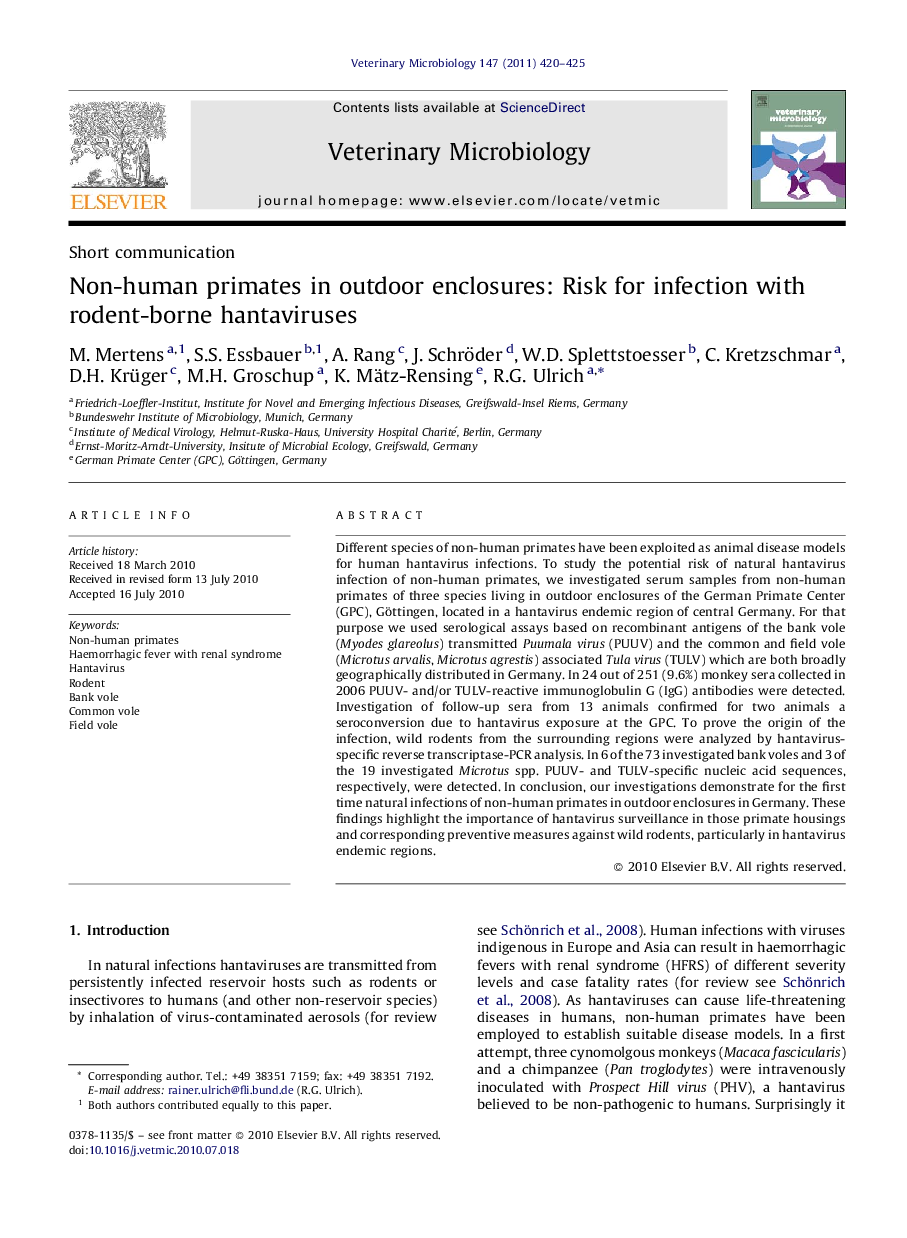| Article ID | Journal | Published Year | Pages | File Type |
|---|---|---|---|---|
| 2467793 | Veterinary Microbiology | 2011 | 6 Pages |
Different species of non-human primates have been exploited as animal disease models for human hantavirus infections. To study the potential risk of natural hantavirus infection of non-human primates, we investigated serum samples from non-human primates of three species living in outdoor enclosures of the German Primate Center (GPC), Göttingen, located in a hantavirus endemic region of central Germany. For that purpose we used serological assays based on recombinant antigens of the bank vole (Myodes glareolus) transmitted Puumala virus (PUUV) and the common and field vole (Microtus arvalis, Microtus agrestis) associated Tula virus (TULV) which are both broadly geographically distributed in Germany. In 24 out of 251 (9.6%) monkey sera collected in 2006 PUUV- and/or TULV-reactive immunoglobulin G (IgG) antibodies were detected. Investigation of follow-up sera from 13 animals confirmed for two animals a seroconversion due to hantavirus exposure at the GPC. To prove the origin of the infection, wild rodents from the surrounding regions were analyzed by hantavirus-specific reverse transcriptase-PCR analysis. In 6 of the 73 investigated bank voles and 3 of the 19 investigated Microtus spp. PUUV- and TULV-specific nucleic acid sequences, respectively, were detected. In conclusion, our investigations demonstrate for the first time natural infections of non-human primates in outdoor enclosures in Germany. These findings highlight the importance of hantavirus surveillance in those primate housings and corresponding preventive measures against wild rodents, particularly in hantavirus endemic regions.
